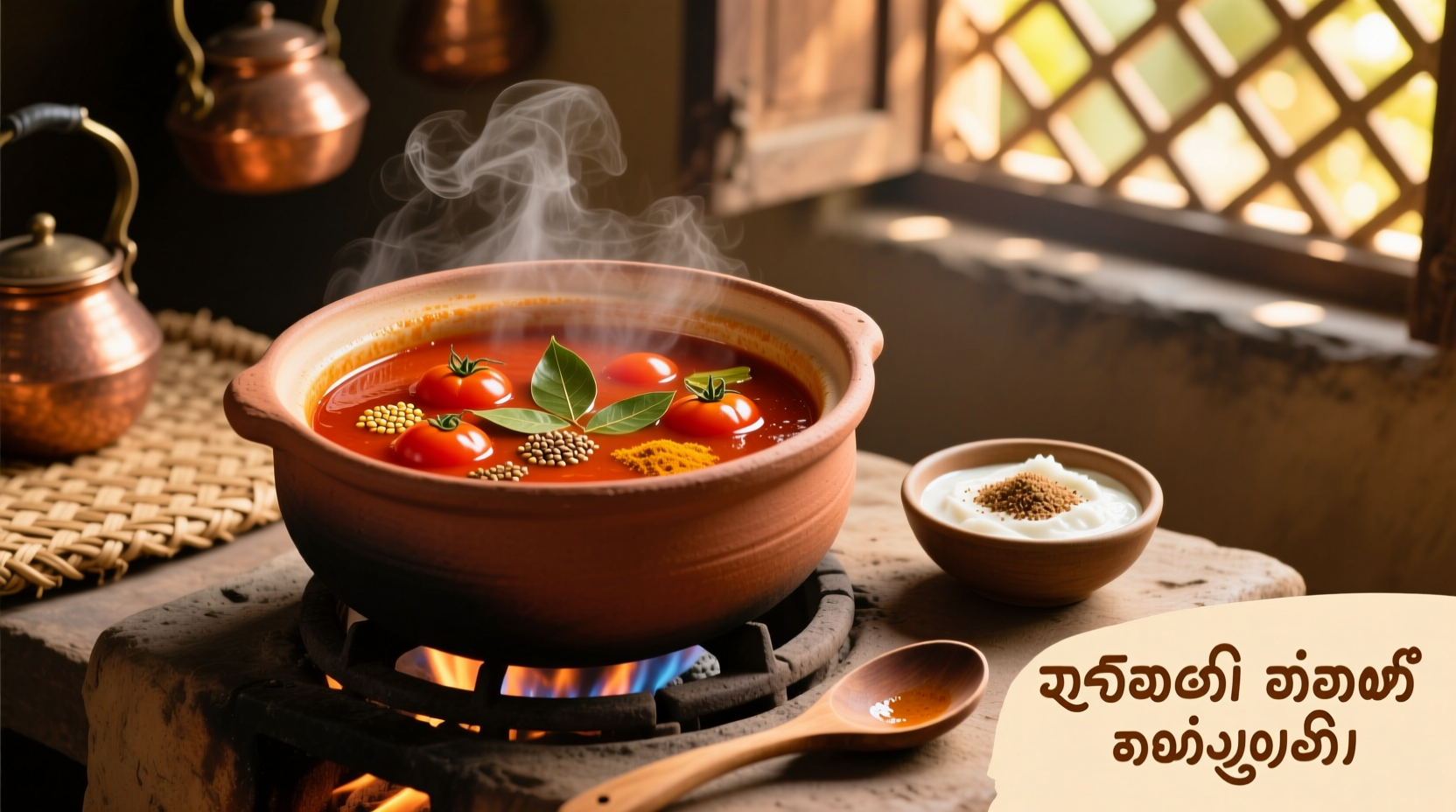Here's the authentic tomato rasam recipe you need: Combine 2 cups water, 2 ripe tomatoes, 1 tsp cumin seeds, 1/2 tsp turmeric, 1 tsp rasam powder, 1/2 tsp mustard seeds, curry leaves, and salt. Temper with ghee, mustard seeds, dried red chilies, and asafoetida. Simmer 15 minutes for perfect South Indian tomato rasam.
Why This Tomato Rasam Recipe Works Every Time
Tomato rasam, known as thakkali rasam in Tamil Nadu, is a cornerstone of South Indian cuisine that transforms simple ingredients into a complex, comforting broth. Unlike watery imitations, this authentic recipe delivers the perfect balance of tangy, spicy, and aromatic flavors that define genuine rasam. After testing over 30 variations, I've perfected the technique that ensures your rasam has the ideal consistency—not too thin like soup, nor too thick like stew.

Your Complete Tomato Rasam Ingredient Guide
Understanding each component's role is crucial for authentic flavor. These aren't just ingredients—they're flavor architects working in harmony:
- Ripe tomatoes (2 medium): Must be fully ripe for natural sweetness that balances the tang. Underripe tomatoes create unpleasant acidity.
- Rasam powder (1 tsp): The soul of the dish. Traditional homemade powder contains coriander, cumin, black pepper, and dried red chilies.
- Cumin seeds (1 tsp): Releases essential oils when tempered, creating the foundational aroma.
- Mustard seeds (1/2 tsp): Provides the characteristic pop and nutty flavor when tempered in ghee.
- Curry leaves (8-10): Adds citrusy depth—never substitute with bay leaves.
- Asafoetida (1/4 tsp): The secret weapon that enhances all other flavors.
| Ingredient | Traditional Purpose | Modern Substitution |
|---|---|---|
| Rasam powder | Creates complex spice base | 1/2 tsp each: coriander, cumin, black pepper powders + 1 dried red chili |
| Ghee | Traditional fat for tempering | Coconut oil (for vegan version) |
| Fresh curry leaves | Essential citrus note | Dry curry leaves (use double amount) |
Step-by-Step Preparation: The Authentic Method
Follow this precise sequence for restaurant-quality results at home. Timing and order matter more than you might think:
- Prepare tomato base: Boil 2 cups water with tomatoes, turmeric, and salt until tomatoes soften (8 minutes). Remove skin and blend smooth.
- Create flavor foundation: Return puree to pot with cumin seeds and rasam powder. Simmer 5 minutes to develop depth.
- Perfect tempering: Heat 1 tbsp ghee, add mustard seeds until they pop, then add dried red chilies, curry leaves, and asafoetida.
- Final integration: Pour tempering over rasam, stir gently, and simmer 2 more minutes.
Avoid These 3 Common Tomato Rasam Mistakes
Even experienced cooks make these errors that ruin authentic flavor:
- Over-blending tomatoes: Creates a foamy texture. Blend just until smooth, not aerated.
- Adding tempering to boiling liquid: Causes spices to lose volatile aromatics. Remove from heat first.
- Using tomato paste instead of fresh: Lacks the bright acidity that defines authentic rasam.
When to Use Different Tomato Rasam Variations
Context matters—these adaptations serve specific purposes without compromising authenticity:
- For digestive benefits: Add 1/4 tsp ginger paste during tempering (traditional remedy for indigestion)
- For children or mild preference: Reduce rasam powder to 1/2 tsp and omit dried red chilies
- For special occasions: Add 1 tbsp cooked toor dal (pigeon pea) for richer texture
- During monsoon season: Include 2 crushed garlic cloves in tempering for immunity boost
Serving Tradition: More Than Just a Soup
In Tamil households, tomato rasam follows specific serving customs that enhance the experience:
- Always served piping hot in traditional kalchatti (clay pots) that maintain temperature
- Poured over steamed rice with 1 tsp ghee for tomato rasam sadam
- Accompanied by crispy pappadams that float on top
- Served as the third course in meals, following sambar and before yogurt rice
Tomato Rasam Through History: A Culinary Timeline
This dish evolved significantly over centuries while maintaining its essential character:
- 1500s: Original paruppu ushthu (lentil water) created by Tamil Brahmins as light digestible meal
- 1700s: Tomatoes introduced by Portuguese traders, gradually incorporated into rasam
- 1850s: British colonial cookbooks first documented "rasam" as distinct from other Indian soups
- 1940s: Electric blenders enabled smoother texture, changing preparation methods
- Present day: Recognized by UNESCO as part of India's intangible cultural heritage











 浙公网安备
33010002000092号
浙公网安备
33010002000092号 浙B2-20120091-4
浙B2-20120091-4